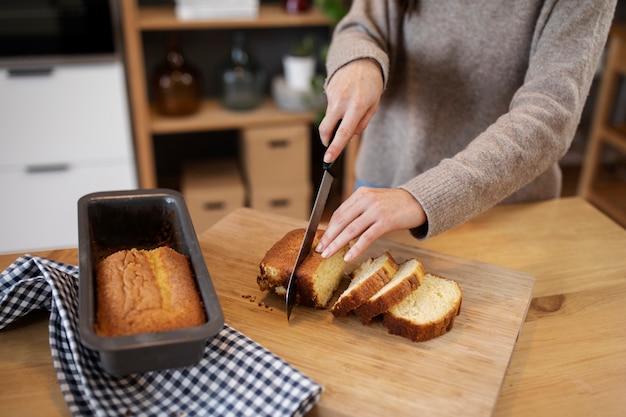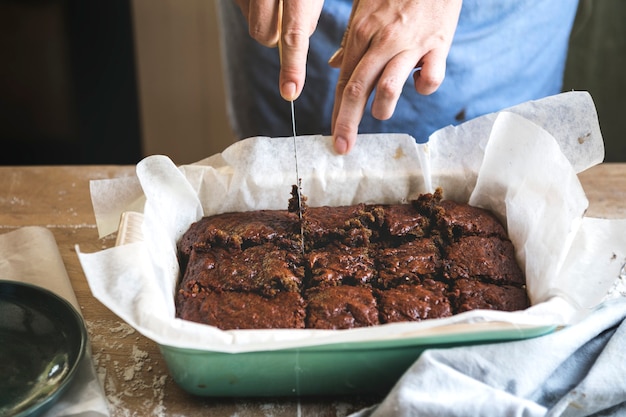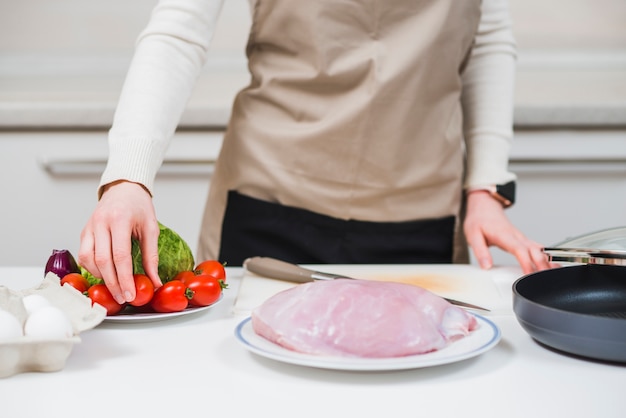I've been making meatloaf for as long as I can remember. My Mum used to make it every Sunday, and I always loved the smell of it wafting through the house. It was such a comforting and familiar dish, and it always reminded me of family dinners. Over the years, I've become quite the meatloaf aficionado, perfecting my own recipe and experimenting with different variations. One of the most important lessons I've learned? Getting the cooking time right is crucial. Bake it too long, and it'll be dry and crumbly. Bake it too short, and you'll have a raw center. So, how long do you bake a meatloaf? Well, it depends on the size and shape of your loaf, as well as the oven temperature. Let me guide you through the process, step by step, so you can create a perfectly cooked, delicious meatloaf every time.
Part 1: The Foundation of meatloaf baking

Before we delve into the specifics of cooking times, let's get the basics right. This may sound obvious, but you'd be surprised how many people forget to preheat their ovens (guilty as charged!). Preheat your oven to 350°F (175°C), which is the standard temperature for baking meatloaf. Also, make sure your oven is properly calibrated. If it's running too hot or too cold, it can affect your cooking times, leading to an overcooked or undercooked meatloaf.
Choosing the Right Baking Dish
I've experimented with various baking dishes over the years, and I've found that a 9x13 inch baking dish is the perfect size for a standard-sized meatloaf. It's large enough to accommodate the loaf without overflowing, but not so big that it takes ages to cook. You also want to ensure that the dish is oven-safe. Glass and ceramic dishes are excellent options, but a metal baking dish works just as well.
The Advantages of a Meatloaf Pan
If you want to be extra sure your meatloaf turns out perfectly, consider using a meatloaf pan. It's a deep, oval-shaped pan with a lid. This lid helps trap moisture inside the loaf, keeping it nice and juicy. However, it's not essential; a standard baking dish will do just fine. If you're using a meatloaf pan, follow the manufacturer's instructions for cooking times.
Part 2: Understanding the Impact of Size and Shape

The size and shape of your meatloaf play a significant role in determining the cooking time. A larger loaf takes longer to cook than a smaller one. A wider, flatter loaf cooks faster than a long, skinny loaf. How do you determine the size and shape? It depends on the recipe you're using. Some recipes specify a particular weight or volume of meat, while others provide a general idea of the size.
Typical meatloaf size
A typical meatloaf weighs around 2-3 pounds. If you're using a standard 9x13 inch baking dish, aim for a loaf that fits comfortably without being too large or too small. A loaf that's too big will take longer to cook and may not be fully cooked through. A loaf that's too small could cook too quickly and become dry.
Part 3: internal temperature - The Unwavering Indicator

You can estimate the cooking time based on the size and shape of your meatloaf, but the most accurate way to ensure it's cooked through is to use a meat thermometer. The internal temperature of a cooked meatloaf should be at least 160°F (71°C). I always use a digital meat thermometer, which provides a more precise reading than a traditional analog thermometer. You can find them at most supermarkets and kitchenware stores.
Avoiding Overcooking
Remember, overcooked meatloaf will become dry and crumbly. So, aim for an internal temperature of 160°F (71°C) and no more. Don't let it reach 170°F or higher!
Part 4: Cooking Time Estimates for Different Meatloaf Sizes
Now, let's talk about cooking times. These are estimates, and the actual cooking time can vary based on the size and shape of your loaf, as well as your oven temperature. However, these estimates provide a good starting point.
Estimated Cooking Times for Various Meatloaf Weights
Here's a table showing the estimated cooking times for different meatloaf sizes:
| Meatloaf Weight (pounds) | Estimated Cooking Time (minutes) |
|---|---|
| 2 | 45-55 |
| 2.5 | 55-65 |
| 3 | 65-75 |
| 3.5 | 75-85 |
| 4 | 85-95 |
Checking for Doneness: The Ultimate Test
After your meatloaf has been in the oven for the estimated cooking time, it's time to check for doneness. The best method is to use a meat thermometer. Insert the thermometer into the thickest part of the loaf, ensuring not to touch the bottom of the baking dish. The internal temperature should reach at least 160°F (71°C). If it hasn't reached that temperature, bake it for another 5-10 minutes and check again.
Part 5: The Importance of Resting
Once your meatloaf is cooked through, let it rest for about 10 minutes before slicing it. This allows the juices to redistribute, resulting in a more tender and juicy meatloaf. You can cover the baking dish with foil while it rests to keep the meatloaf warm and prevent it from drying out.
Part 6: Oven Placement Matters
Where you place your meatloaf in the oven can affect the cooking time. A loaf on the bottom rack cooks faster than one placed on the top rack. I usually place mine on the middle rack, ensuring it cooks evenly on all sides.
Using a Baking Sheet as a Protective Barrier
You can also place your meatloaf on a baking sheet before putting it in the oven. This catches any drips, making cleanup easier. However, I usually just bake it directly in the baking dish.
Part 7: The Secret to a Juicy Meatloaf
A key factor in achieving a delicious, juicy meatloaf is moisture. This means using a combination of ground meats, breadcrumbs, and liquids. I prefer a mixture of ground beef and pork. I also like to add a little bit of ground veal or lamb, which adds a touch of depth and richness. Breadcrumbs bind the meat together and absorb some of the liquid. I use a mix of dry breadcrumbs and milk or water, helping to keep the meatloaf moist and prevent it from becoming dry and crumbly.
The Power of Eggs: Binding and Enriching
Eggs play a crucial role in keeping meatloaf moist. They bind the meat together and add richness and flavor. I usually use 1-2 eggs per pound of meat.
Part 8: Common meatloaf mistakes: Avoiding the Pitfalls
Here are some common mistakes that people make when baking meatloaf and how to avoid them:
- Overworking the Meat: Overworking the meat will make it tough. Gently mix the ingredients together, using your hands or a wooden spoon.
- Not Pressing the Meatloaf Firmly: Pressing the meatloaf firmly helps to prevent it from cracking. It's important to create a compact loaf for even cooking and a nice shape.
- Not Covering the Top of the Meatloaf: Covering the top of the meatloaf with foil during the first 30 minutes of baking helps to prevent it from drying out. This creates a steamy environment inside the oven, promoting moisture retention.
- Overbaking the Meatloaf: Overbaking will make your meatloaf dry and crumbly. Use a meat thermometer to check for doneness and remove the meatloaf from the oven when it reaches an internal temperature of 160°F (71°C).
Part 9: Frequently Asked Questions: Solving Your Meatloaf Dilemmas
Here are some frequently asked questions about meatloaf cooking time:
How do I know if my meatloaf is cooked through?
The best way to know for sure is to use a meat thermometer. Insert the thermometer into the thickest part of the loaf, making sure not to touch the bottom of the baking dish. The internal temperature should be at least 160°F (71°C). You can also check for doneness by pressing the center of the meatloaf with your finger. If it feels firm and springy, it's cooked through.
What if my meatloaf is a bit dry?
If your meatloaf is a bit dry, you can try adding a little bit of extra liquid to it. You can also try covering the top of the meatloaf with foil for the last 10 minutes of baking. This will help to keep the meatloaf moist.
Can I freeze meatloaf?
Yes, you can freeze meatloaf. Wrap it tightly in plastic wrap and then place it in a freezer bag. It will last in the freezer for up to 3 months. To thaw, place the meatloaf in the refrigerator overnight. You can also thaw it in the microwave, but it may end up a bit dry.
What are some good side dishes for meatloaf?
There are many great side dishes for meatloaf. Some popular options include mashed potatoes, green beans, gravy, and cornbread. Consider serving it with a fresh green salad to add a contrasting element of freshness.
What can I do with leftover meatloaf?
Leftover meatloaf can be used in a variety of ways. You can make sandwiches, salads, or even meatloaf balls. You can also freeze leftover meatloaf for later use.
That's it – a comprehensive guide to meatloaf baking time, from the basics to insider tips and tricks. Remember, the most important thing is to use a meat thermometer to check for doneness. Once you've mastered the basics, experiment with different recipes and variations. Have fun with it!
Everyone is watching

How to Cook Frozen Lobster Tails Perfectly: A Step-by-Step Guide
RecipesLobster. Just the word conjures up images of lavish meals, special occasions, and a taste of luxury. But let's...

Pork Fillet Cooking Time: How Long to Cook It Perfectly
RecipesPork fillet, or tenderloin as it's sometimes called, is a real favourite in our house. It's so versatile, and...

Pigs in a Blanket Cooking Time: How Long to Bake for Perfect Results
RecipesAh, pigs in a blanket. Just the name conjures up images of those delightful little parcels of crispy pastry en...

The Ultimate Guide to Cooking Delicious Frankfurters
RecipesLet's face it, we all love a good frankfurter. It's a classic, simple, and always satisfying. But let's be rea...

Wolf Meat Recipes: A Guide to Cooking Wild Game
RecipesLet's be honest, you don't see wolf meat at your local butcher shop every day. It's a bit of a wild card, but ...
